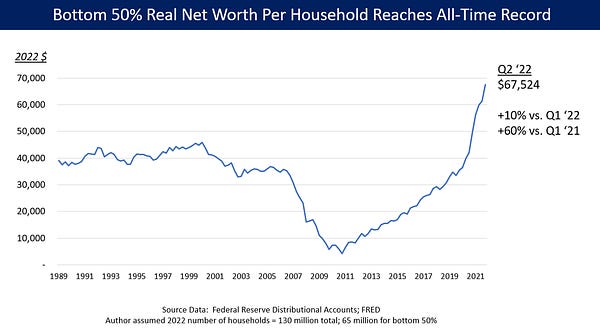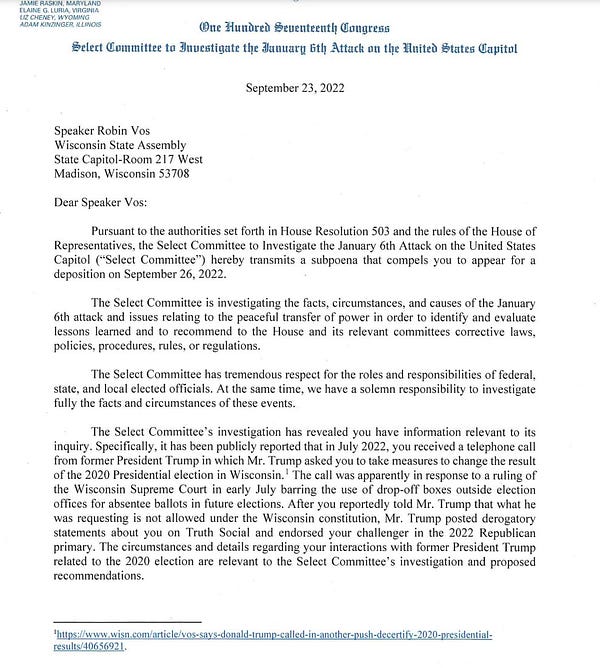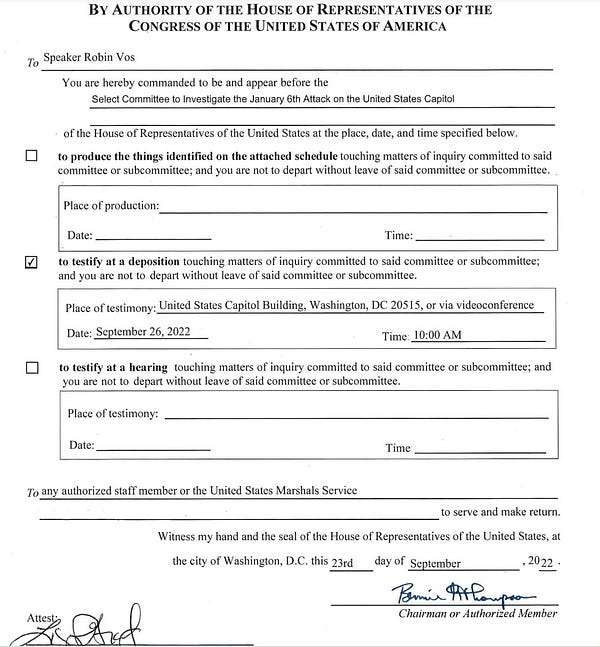A headline in the New York Times today read: “Factory Jobs Are Booming Like It’s the 1970s.” The story explained that more money in the hands of consumers thanks to federal stimulus spending, along with a new skepticism of stretched supply lines, has created a rebound in American manufacturing.
Since the 1970s, authors Jim Tankersley, Alan Rappeport, and Ana Swanson explain, outsourcing and automation have meant that every recession has seen factory jobs disappear and never return as employers used downturns to move operations to countries with lower wage levels. This time, though, American manufacturers have not only regained all the jobs lost during the pandemic, they have also added about 67,000 more. Those numbers would be higher if the labor market weren’t so tight, a condition leading employers to offer higher wages and better benefits.
Biden has made it clear that he is trying to overturn 40 years of “supply side” economics, ushered in by President Ronald Reagan. This system was designed to free up capital at the top of the economy through tax cuts and deregulation in the belief that putting capital in the hands of the wealthy—the “supply side”— would lead them to invest more in the economy, thus making it grow more quickly and providing more jobs. While Republicans came to embrace that ideology wholeheartedly, in fact it never showed signs of increasing economic growth. What it did was to move wealth dramatically upward. It also made the measure of the economy the health of Wall Street rather than Main Street.
Since Abraham Lincoln’s administration, which faced a similar economic stratification and a similar justification for it, another approach to the economy has stood against this ideology. Leaders from Lincoln to Theodore Roosevelt to Franklin Delano Roosevelt have argued that providing opportunity for people at the lower end of the economy—the “demand side”—would drive production and consumption, spreading prosperity upward. Biden has followed in this tradition. Insisting that he would build the economy “from the bottom up and the middle out,” he, along with the Democrats in Congress, bolstered domestic manufacturing with measures like the Bipartisan Infrastructure Law, the Inflation Reduction Act, and the CHIPS and Science Act.
Now, statistics show, that investment has paid off. Chad Moutray, the chief economist for the National Association of Manufacturers, told the New York Times reporters: “We have 67,000 more workers today than we had in February 2020. I didn’t think we would get there, to be honest with you.”
National Economic Council director Brian Deese told the reporters, “One of the most striking things that we are seeing now is the number of companies—U.S. companies and global companies—that are committing to build and expand their manufacturing footprint in the United States, and doing so based on their view that not only did the pandemic highlight the need for more resilience in their supply chains, but that the United States is creating a policy environment that makes long-term investment here in the United States more attractive.”
Meanwhile, the real net worth of the bottom 50% of U.S. households has climbed 60% since Biden took office, now reaching $67,524.
One of the things that will continue to feed this change is the plan to forgive significant student loan debt, especially among low-income Black and Brown Americans. This story is hitting the news today after the Congressional Budget Office responded to a series of questions posed by Senator Richard Burr (R-NC) and Representative Virginia Foxx (R-NC), both fervently opposed to the program. The CBO’s responses to those specific questions have been widely published, suggesting the program will cost the U.S. $400 billion. This is sparking cries about its expense, but this particular CBO number calculates the cost over the next 30 years rather than the usual ten, does not address the stimulus effects of the relief, and does not take into account how much anyone would actually have repaid. The estimate is, the CBO states in its letter, “highly uncertain.”
In contrast to Biden’s economic program, on Friday the new government of Prime Minister Liz Truss announced the most radical tax cuts in Britain since 1972, cutting the top income tax rate as well as corporate taxes to spur the economy. This unfunded cut will mean borrowing at rising interest rates. Concerns about inflation, already hammering the British economy, made the value of the pound, which is the English unit of currency, drop to its lowest level since 1985.
These different economic visions are in conflict here in the United States. Former Trump economic advisor Steve Moore reacted to the Truss tax cuts by saying: “This is exactly what we should be doing in the US.” White House economic advisor Jared Bernstein said: “President Biden has been very clear about the negative track record of trickle-down, Reagan-style tax cuts.”
Republicans have managed to keep voters behind their economic program by downplaying it and emphasizing cultural issues, primarily abortion, which reliably turned out anti-abortion voters. Now that the Supreme Court has overturned the 1973 Roe v. Wade decision legalizing abortion, Republicans have a demographic problem: a majority of voters support reproductive rights and are turning out to vote, and there is no longer a reason for anti-abortion voters to show up.
So Republican leaders are downplaying abortion: reporter Eric Garcia noted today that Republican representative and Senate candidate Ted Budd (R-NC), who is a cosponsor of the House version of Senator Lindsey Graham’s (R-SC) national abortion bill, didn’t mention his stance in a recent rally with former president Trump. They are also inventing new cultural crises, most notably an attack on LGBTQIA folks but also a renewed attack on immigrants.
Trump has gone further, jumping aboard the QAnon train, which the FBI considers a domestic terrorism threat, as his own legal troubles are mounting. His lawyers failed to slow down the criminal investigation into his theft of documents, including many marked with the highest levels of classification. New York Attorney General Letitia James has sued Trump, his company, and his children and two associates for fraud. And now the House Select Committee to Investigate the January 6th Attack on the U.S. Capitol is beginning to turn up more information.
On Friday the committee subpoenaed Wisconsin House Speaker Robin Vos to ask about a phone call he had with Trump in July 2022 (not a typo) in which Trump tried to get him to change the 2020 result in Wisconsin. Vos is challenging the subpoena.
In the lead-up to Wednesday’s midday public hearing of the committee, Zachary Cohen of CNN reported today that election denier Phil Waldron, a former Army colonel associated with Trump loyalist Michael Flynn, was in contact with White House chief of staff Mark Meadows in late December 2020 about gaining access to the voting systems in Arizona and Georgia. Waldron referred to Arizona as “our lead domino we were counting on to start the cascade,” to overturn the election.
Meanwhile, Ginni Thomas, the wife of Supreme Court justice Clarence Thomas, was texting QAnon links to Meadows. And now, after flirting with QAnon since 2020, Trump has embraced it wholeheartedly, first “retruthing” social media posts featuring him as a QAnon hero and warning that “The Storm Is Coming,” then using QAnon music at a rally. Now, he has sent out an email calling for the death penalty for drug dealers—a favorite theme of fascists since the 1930s and a major part of the program of former dictator Rodrigo Duterte of the Philippines, whom Trump admires—along with the warning that “Under Democrat control, the streets of our great cities are drenched in the blood of innocent victims,” tapping into the QAnon themes of violent retribution for those they see as preying on America’s youth.
“I certainly will do whatever it takes to make sure Donald Trump isn't anywhere close to the Oval Office,” Representative Liz Cheney said this weekend at The Texas Tribune Festival, which highlights politics and policy. “And if he is the nominee, I won't be a Republican.” She warned that a Republican majority in the House would empower Trump Republicans like Jim Jordan (OH), Marjorie Taylor Greene (GA), and Lauren Boebert (CO).
And when asked if Trump should testify before the committee, Cheney answered: “Any interaction that Donald Trump has with the committee will be under oath and subject to penalty of perjury.”
—
Notes:

https://www.nytimes.com/2022/09/26/business/factory-jobs-workers-rebound.html
https://fred.stlouisfed.org/graph/?graph_id=1092257


https://www.cbo.gov/system/files/2022-09/58494-Student-Loans.pdf


https://www.independent.co.uk/voices/trump-north-carolina-abortion-roe-ted-budd-b2175540.html








https://www.texastribune.org/2022/09/24/liz-cheney-texas-tribune-festival/


“in fact it never showed signs of increasing economic growth. What it did was to move wealth dramatically upward. It also made the measure of the economy the health of Wall Street rather than Main Street.”
It is also a fact that more Chinese businessman have become millionaires and billionaires than in the US since 1980 by a huge margin. It also lifted a billion Chinese out of poverty. Thank Nixon for ‘opening’ China. For his business donors. At the expense of the ever shrinking US middle class. “These jobs are going boys, and they ain’t coming back.”-Bruce Springsteen. “Capital is like water, it seeks its own level”- AOL Time Warner CEO said something like that mid 2000’s.
Now, after 42 years of concentrating so much wealth upward and Citizen’s United to keep it that way, and no Fairness Doctrine thus keeping masses ignorant of these facts. Do we have a chance of a more perfect Union based on equality of opportunity, of access to quality education, clean air and water, and the pursuit of happiness? Our only chance is to vote BLUE!
I’m so glad we finally had the chance to prove “bottom up and out” is the best way to grow the economy and benefit the middle class. President Biden is going a great job and can do even more if we can get him a better majority.